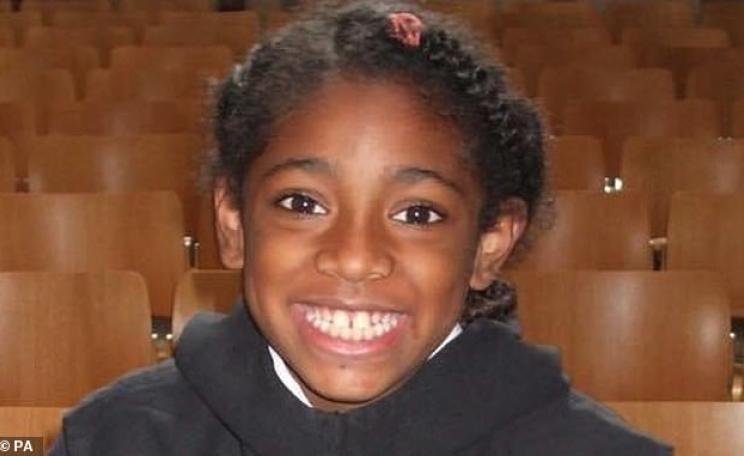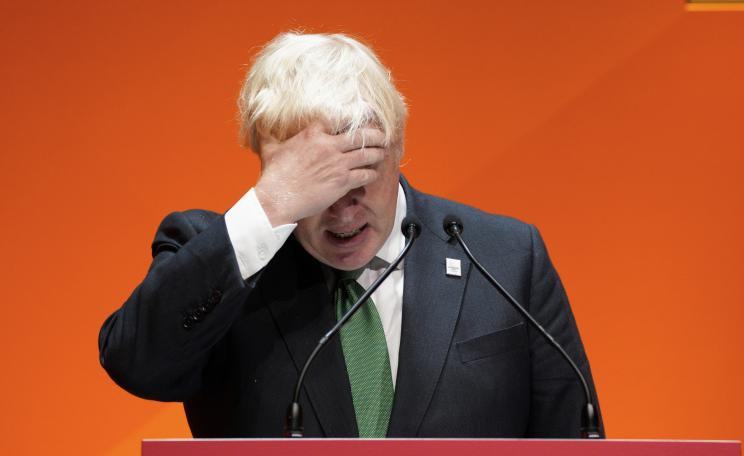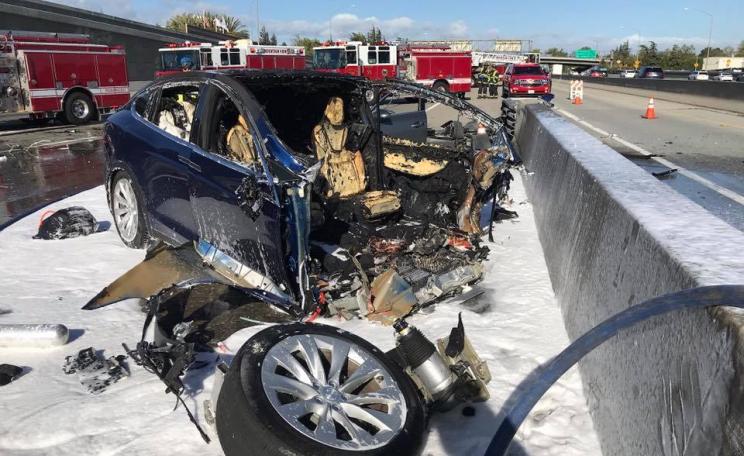The city can make a huge collective effort to reduce road traffic volumes. Or it can pour resources into the Silvertown tunnel, a road expansion project.
London mayor Sadiq Khan has lashed out at opponents of the Silvertown tunnel project, who are calling on him to pause and review the major infrastructure project at the eleventh hour.
Khan has filed a complaint against Newham mayor Rokshana Fiaz, after she shared on social media a claim by the Stop the Silvertown Tunnel Coalition that City Hall had used “lies and half-truths” to justify the scheme.
The complaint has gone to Clyde Loakes, Labour chief whip for London Councils, which brings together the leaders of 21 Labour-led councils in the capital.
Unjustifiable
The tunnel project has no discernible local support. Greenwich, Lewisham and Hackney councils are opposed, along with Newham, as are climate scientists, transport researchers, trade unions, community groups and thousands of local residents who have turned out on protests.
Yet preparatory work is already underway, and contractors working for Transport for London (TfL) are lowering pieces of the biggest tunnel boring machine ever used in the UK into its chamber. So political pressure to rethink is peaking.
If the £2.2 billion scheme goes ahead, it will exacerbate dreadful air pollution problems locally, boost road transport, and undermine efforts to tackle dangerous climate breakdown.
Having worked with the Stop the Silvertown Tunnel Coalition to coordinate opposition to the project, it is my honest opinion that “lies and half-truths” have been used extensively against us.
The mayor, who claims to be spearheading global efforts to reduce greenhouse gas emissions from cities, has together with the tunnel’s few supporters created a world of doublethink – covering climate, transport and local democracy – to justify an unjustifiable scheme.
Gigantic
On climate, the mayor in January announced new targets for London to reach “net zero by 2030”. Although these targets still fall short of the Tyndall Centre’s science-based projections – and envisage that London’s transport, industry, power and housing systems will in 2030 be pouring more than 10 million tonnes of carbon dioxide equivalent (MtCO2e) per year into the atmosphere – they point in the right direction.
But a consultants’ report on how to meet the targets warns that a huge culture change is needed in transport, and that traffic volumes need to fall by at least one quarter. That approach is incompatible with the Silvertown tunnel, London’s biggest road building project since the M25.
The city can make a huge collective effort to reduce road traffic volumes. Or it can pour resources into the Silvertown tunnel, a road expansion project.
The consultants, Element Energy, focus on technical and engineering solutions about which many researchers are sceptical – but even they admit that “reaching net zero early can not be achieved by technology alone”.
Asked by the mayor to show how London’s transport could be decarbonised more rapidly than previously planned, the consultants propose large-scale “behaviour change”: in an “accelerated green” scenario, a 27 percent reduction in traffic measured by vehicle kilometres driven per year – or, in a more ambitious “no constraints” scenario, a 40 percent reduction.
Even these swingeing cuts in traffic volume would not be enough to meet London’s climate targets, according to Element Energy. A gigantic technology shift would be needed, too: in the “accelerated green” scenario, 46 percent of London’s cars would be electric, and 10 percent hybrid, in eight years’ time.
Inaccuracies
Other transport researchers are sceptical about the decarbonisation effect of electric vehicles, and advise still greater emphasis on reducing traffic.
Which way will London go? The city can make a huge collective effort to reduce road traffic volumes. Or it can pour resources into the Silvertown tunnel, a road expansion project. To pretend it can do both is doublethink.
In a response to the Element Energy proposals, the mayor proposes to introduce London-wide road user charging “by the mid-late 2020s”, raising another question mark over plans to finance the tunnel project with tolls. Would tunnel tolls be introduced on top of city-wide road charges? It strains credibility.
In April last year, 72 climate scientists, transport researchers and other experts warned that the “foolhardy” tunnel project would “undermine the UK’s efforts to address climate change”. City Hall responded by supercharging its doublethink.
The mayor’s office never answered the climate researchers’ plea. Instead, when MPs and community activists wrote their own protest letters, Heidi Alexander, former deputy mayor of transport, replied with what I consider to be misleading information and inaccuracies.
Scenarios
In a form letter sent to those who questioned the tunnel project, Alexander – who resigned at the end of last year, and now hopes to be Labour’s parliamentary candidate for south Swindon – stated:
* That the London climate targets – then less ambitious than the new targets set this year – were “zero carbon goals”. In fact they provided for London to pour 18 MtCO2e/year into the atmosphere in 2030, and 5 MtCO2e/year in 2050. Those numbers are not zeroes!
* That the targets were based on “modelling of carbon emissions” that “takes into account planned developments such as the Silvertown tunnel”.
They were not. They were underpinned by assessments from Jacobs, the engineering firm, which included public transport projects such as Crossrail 2 and extensions of the Docklands Light Railway and Bakerloo lines – all subsequently scrapped – as well as the tunnel.
The only modelling of the tunnel’s greenhouse gas impact, published by TfL in 2016, indicated that (i) the tunnel would add 23,000 tCO2e/year, and (ii) in the mid-2030s, London’s road network would produce more than 5 MtCO2e/year of greenhouse gas emissions, more than twice the level allowed for by the climate targets.
* That London’s carbon reduction trajectory, linked to its climate targets, has been “independently assessed” by C40 Cities, the global mayors’ organisation.
In fact C40 employed Arup, the multinational engineering firm, to compare London’s carbon trajectories - on which Arup worked as consultants - with C40’s own Deadline 2020 trajectories which were in turn drafted by a team led by Arup employees.
In reality, there was always a wide gap between scenarios in which the Silvertown tunnel is built, and scenarios in which London meets its climate targets. By adopting new targets in January, the mayor has made this gap wider.
Tolls
City Hall’s doublethink has also been applied to transport policy. When TfL managers first modelled the Silvertown tunnel’s impact on traffic volumes, they told the computer to assume, in advance, that there would be no extra trips across the Thames.
This breached the key principle, verified by decades of transport research and encoded in reports to the UK government in 1994, 1998 and 2018, that more roads produce more traffic.
TfL managers have since admitted that the Silvertown tunnel could make traffic volumes rise by 15-30 percent, in flyers distributed to local residents. But, they claim, the proposed toll at the tunnel – and at the Blackwall tunnel a few metres to the west – would solve the problem.
Previous experience, for example at the Dartford crossing and the M6 toll road, shows that tolls do not have this effect: traffic volumes may rise in spite of them.
And legal advice, both to the borough of Greenwich and separately the Stop the Silvertown Tunnel Coalition, confirms that a future mayor could remove tolls, anyway.
Invitations
That was the subject of the tweet that Newham mayor Fiaz shared, and to which Sadiq Khan objected so strongly.
The tweet also pointed out that TfL is wrong to call the Silvertown tunnel London’s “first new river crossing in over 50 years”. There is the Millennium Bridge, the Jubilee line, the Docklands Light Railway, the Golden Jubilee bridges and Crossrail.
City Hall’s doublethink on climate and transport goes hand in hand with doublethink about local democracy.
The mayor’s staff have consistently stonewalled our campaign, and refused all of our repeated invitations to discuss the tunnel in public.
Deputation
But even they have been outdone by the former leadership of Greenwich council, which for two years claimed, bizarrely, that there was “no legal avenue” by which they could oppose the tunnel.
Question: could you send a letter or email to Sadiq Khan, asking him to pause and review this ruinous project? Answer: there’s “no legal avenue”. Seriously. In a country with reasonable levels of free speech, in the 2020s.
In February, when councillors who oppose the tunnel pushed the issue on to the agenda of the borough’s Overview and Scrutiny Committee, legal officers advised that body, wrongly, that it was inhibited from taking action by the Development Consent Order issued to approve the project in 2018.
The legal principle that councils can express an opinion on any issue impacting local residents was ignored.
The council leadership’s efforts to silence our protests went into overdrive. The former local mayor, Denise Hyland, rejected our repeated requests for a deputation to address the council, and refused to allow public questions about the tunnel project, both on “legal” grounds.
Power
On 24 February, we lobbied a council meeting; Hyland, former council leader Danny Thorpe and others stuck stubbornly to the “legal” doublethink.
I recall it well, because, on that day, Russia had invaded Ukraine. Dozens of local government officials in that country had risked arrest by signing an appeal to the Kremlin to stop – while their comfortable counterparts in Greenwich used doublethink to explain why they could not act.
In the end, the electorate in Greenwich forced a change. The ruling Labour group, faced with losing seats to the Greens in the May council elections, abruptly reversed its position, discovered that “legal avenues” existed, and called for the tunnel project to be paused and reviewed. But damage to local democracy had still been done.
The local is global. If the Silvertown tunnel project goes ahead, it will not only exacerbate pollution problems in Greenwich and Newham that will disproportionately hit Londoners of colour and low-income families; it will also prevent London from meeting its climate targets and making an effective contribution to tackling climate change.
This matters beyond London. Sadiq Khan wields more executive power than any other Labour politician; his promotion of climate doublethink shows us what a future Labour government would do.
Hypnosis
This doublethink will not fool the millions of victims of climate-change-related heatwaves and flooding across the global south. But it makes all of our efforts to deal with these problems harder. It needs to be challenged, exposed and defeated.
The term “doublethink” was coined by George Orwell in his novel 1984, written in 1949 and set in a dystopian world dominated by “the Party”.
“Winston [the novel’s main protagonist] sank his arms to his sides and slowly refilled his lungs with air. His mind slid away into the labrynthine world of doublethink”, Orwell wrote.
“To know and not to know, to be conscious of complete truthfulness while telling carefully constructed lies, to hold simultaneously two opinions which cancelled out, knowing them to be contradictory and believing in both of them, to use logic against logic, to repudiate morality while laying claim to it, to believe that democracy was impossible and that the Party was the guardian of democracy, to forget whatever it was necessary to forget, then to draw it back into memory again at the moment when it was needed, and then promptly to forget it again, and above all, to apply the same process to the process itself – that was the ultimate subtlety: consciously to induce unconsciousness, and then, once again, to become unconscious of the act of hypnosis you had just performed. Even to understand the word – doublethink – involved the use of doublethink.”
Right of Reply
A spokesperson for the mayor of London told The Ecologist: “The Silvertown Tunnel will transform the way people can travel in a part of London that currently has few options for crossing the Thames.
“In addition to providing new, zero-emission, cross-river bus services for an area in need of them, the tunnel will massively reduce the chronic vehicle congestion and air pollution problems currently associated with the inadequate, Victorian-era Blackwall Tunnel.
“Both the Blackwall tunnel and new Silvertown tunnel will be subject to a user charge and, when combined with the Mayor’s overall policy of reducing car use across Greater London in favour of active and public transport options, will help reduce congestion without increasing the volume of traffic crossing the river.”
This Author
Dr Simon Pirani is an energy researcher and historian. His most recent book is Burning Up: A Global History of Fossil Fuel Consumption (Pluto 2018). He blogs at People and Nature and tweets as @SimonPirani1.
For more information about the campaign you can access a Briefing, a report, and an Frequently Asked Questions.







